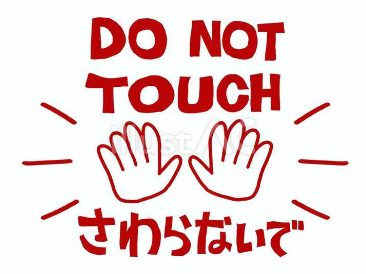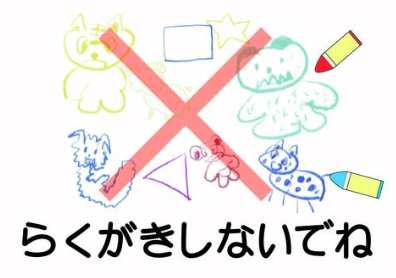ないで (naide) is an expression that is used to indicate an action done without another, or a request not to perform a certain action.
More specifically, ないで is used in the following 2 situations:
- express the meaning of
without doing (A), I do (B); - Make a request to someone
not to do (A), thus translates an imperative form.
In this post we go to see how the expression ないで is formed, where it comes from, and how to use it in different contexts.
We'll also see the difference between ないで and なくて.
Where does ないで come from
ないで is a combination of the auxiliary verb ない (not to exist) and of the particle で.
In this expression, the conjugated verb in the negative form ない expresses not to do, while で means with; together the literal meaning becomes with without doing ....
ないで is also one of two possible negative conjugations of the te form (て), along with なくて.
ないで and なくて
ないで means without doing, なくて is the negative te form of the auxiliary ない and has several functions.
They are two forms with quite different meanings and uses:
- なくて is used to say
I did not do (A) and I did (B); that is, the action (A) is not performedandthe action is performed. (B); - ないで indicates that
I did (A) without doing (B).
Example with the verb 閉める close, we have the 2 forms 閉めなくて and 閉めないで:
窓を閉めないで寝てしまった。
I fell asleep without closing the window.
The following sentence is with the verb 来る come in the 2 forms 来ないで and 来なくて.
友達が来なくて心配しました。
My friend didn't come and I was worried about it.
The form in て, in this case negative なくて, has various functions. In the previous sentence we had the coordinative function expressed by the conjunction and.
In the other functions it can express a reason, a cause, a situation and can be translated by the conjunctions therefore, then etc.
Previous example:
`I got worried when I did not see my friend arrive.
ないで to say "without doing"
As mentioned, the main meaning of ないで is to do (A) without doing (B). To form this expression it is sufficient to conjugate the preceding verb in the negative form ない and add the particle で.
歯を磨かないで寝ちゃうの?
Are you going to sleep without brushing your teeth?
In this example the verb 磨く (brush) is conjugated in its negative form in ない and linked to the particle で. The meaning therefore becomes without washing (brushing) ....
ないで can only be used with verbs
The use of ないで expresses the idea that (A) has never been done before without (B), which indicates something that is contrary to what we expect. For this reason, ないで is used to express something unexpected or surprising.
ないで for "don't do" requests
The second use of ないで is to ask someone not to do a certain action. This expression is formed in the same way as the previous one. It will therefore be necessary to know the context to understand which of the two meanings is expressed.
それを食べないで。
Don't eat that.
This expression is often followed by ください (kudasai) ないでください which means 'please don't do' and thus indicates a polite request.
ないで in prohibitions
The ないで imperative form is commonly used in prohibition signs.
I'll share some images of kanban 看板 signboards from the Internet expressing things that are forbidden to do; "prohibition" is also expressed using the form てはいけない.

ここでは遊ばないで!
Don't play here!

さわらないで!
Don't touch!

らくがきしないでね!
Don't scribble!
Other examples of ないで
朝ご飯を食べないで会社に行きました。
I went to work without eating breakfast.

何も考えないで生きる方法とは?
How to live without thinking?
Similar grammar points in Japanese 📚
~ていく
~ていく (teiku) Meaning Japanese Grammar - Keep Doing
てよかった
てよかった (te yokatta) Meaning Japanese Grammar - I'm Glad That...
それでもいい
それでもいい (soredemoii) Meaning Japanese Grammar - It's Fine
それでも
それでも (sore demo) Meaning Japanese Grammar - Still
させられる・せられる
させられる・せられる (saserareru serareru) Meaning Japanese Grammar - To Be Made To Do Something
など
など (nado) Meaning Japanese Grammar - Etc

